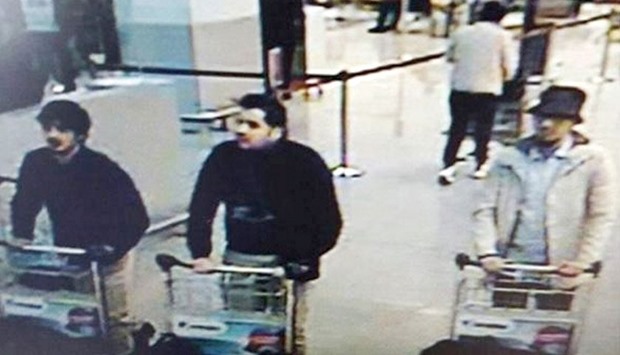As Tuesday’s tragedy in Belgium made clear, air travel remains vulnerable to determined terrorists. Three plotters, at least one of whom wore a suicide vest, killed or maimed hundreds by striking the unsecured front of the Brussels airport, the departures terminal.
The attack sparked an important debate about extending the security perimeter, as a few airports have done to some degree.
But the check-in counter and the approaches to the airport aren’t the only danger zones. For terrorist groups around the world, smuggling a bomb onto a plane is still the key part of their plots. And as recent attacks demonstrate, terrorists are learning to exploit back-of-the-airport employees like baggage handlers and catering and cleaning crews to bring down aircraft.
Twice in the last two months, Al Shebaab, an Al Qaeda affiliate, has turned its sights on passenger planes in Somalia. In February, one of the group’s recruits blew himself out of an aircraft with a laptop bomb on a flight from Mogadishu to Djibouti. Happily, the plane was able to land safely, and no one else was hurt.
But the terrorists tried again on March 7. When a luggage bomb went off prematurely at a checkpoint, it injured six. In both cases, reports suggest, Al Shebaab was counting on insiders to get its relatively unsophisticated explosives through security screenings.
The latest airline plots look very different from the pricey, sophisticated operation that brought down the World Trade Center on September 11, 2001. Since then, the US has made huge strides on aviation security. From the parking lot to the cockpit door, the US hardened the targets that tempt terrorists. And despite some attempts - the shoe bomber and the underwear bomber, liquid bomb and cartridge bomb plots - no homeland flight has been taken down since 2001.
But in Africa and the Middle East, terrorists have learned how much damage low-cost, low-skill aviation plots can do. The proof of this concept was Metrojet Flight 9268, which exploded over Sinai.
In October, Islamic State’s Egyptian branch affiliate managed to take down the Russian airliner, killing 224 passengers and crew, with the help of a man on the inside, a worker at Sharm El Sheikh airport who got what the group claims was a bomb packed in a soda can on the jet.
Al Shebaab is now trying to copy this approach - smuggling explosives onto planes hidden in suitcases, laptops and other devices.
The insider threat, then, is the urgent risk in much of the world. By recruiting airport workers, whether they’ve been bribed or brainwashed, terrorist groups can take a shortcut around many security measures now in place. The rest is relatively easy. Simple bomb designs that can be hidden circulate widely online.
To adapt, airports in the developing world will need better equipment and deeper expertise. The US can use both carrots and sticks to underline those priorities.
The power of the purse is a key tool. We need to set aside more funding to train and identify talented screeners, not just to secure airports, but also to work with trustworthy staff around the world. Security agencies should use foreign aid and trade preferences to encourage best practices in aviation security, such as screening workers with access to airplanes. By investing in “partner capacity”, we make more flights secure against our enemies’ ambitions.
But better security equipment and expertise in the developing world’s airports can only achieve so much. We need better intelligence. Too few countries share information on known risks and trusted travellers; everyone wastes resources vetting the same passengers over and over, which allows some threats to slip through the cracks. We need to globalise “trusted traveller” programmes, as the US Department of Homeland Security has started to do with Germany, Mexico and South Korea. Pre-screening travellers can save time, resources and lives.
This work isn’t glamorous. With the war against Islamic State raging in Iraq, Syria and now Libya, it’s tempting to postpone these investments. Why spend a dollar on someone else’s airport security when the same funds can go toward smart bombs or the CIA? But the war on the ground is just a fraction of the fight. Every day Islamic State survives, radicals around the globe flock to its ideology, and many will turn their attention to the targets that have fixated terrorists for generations: jetliners.
Islamic State’s most important weapon isn’t the assault rifle or the suicide vest - it’s the man or woman on the inside, the sympathiser. Answering this threat starts with stronger partnerships at airports around the world. After the February bombing, Somalia asked for the US help. Cleary, the US hasn’t provided enough.
- Jane Harman is the head of the Woodrow Wilson International Center for Scholars. A former representative of California’s 36th Congressional District, she served for eight years on the House Intelligence Committee.

This CCTV image from the Brussels airport surveillance cameras, made available by Belgian Police, shows suspects in the bomb attack on March 22.


